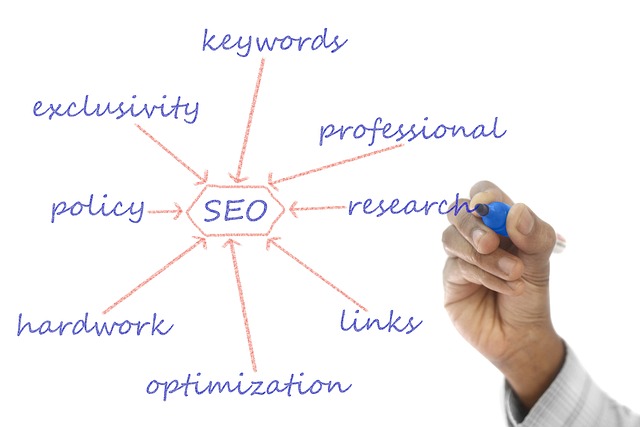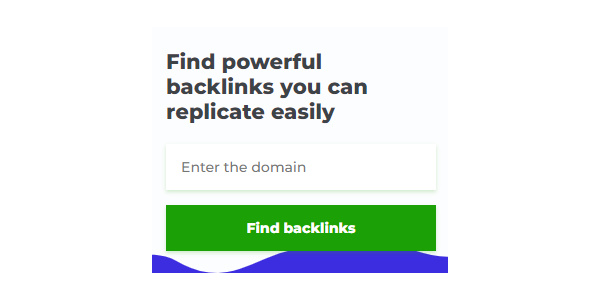
If your customers cannot find your website, investing time and money to build a visually appealing site becomes pointless. However, how can you ensure that your site stands out among the vast amount of content available on the Internet?
By optimizing your keywords and building your site in the right manner, search engine optimization (SEO) enables customers to easily find your site when they search on Google, Bing, and Yahoo. This, in turn, leads to increased traffic to your page and ultimately results in more sales.
Now, we can begin.
1. Find the right keywords
Consider the terms your clientele is prone to employing while searching for your products or services online. For instance, if you specialize in selling appliances, are your patrons more inclined to employ a formal term such as “refrigerator,” or a colloquial term like “fridge”?
Create a roster of 20 to 50 keywords and proceed to Google Ads. After setting up an account (if not done yet), you can verify the popularity of the selected keywords by checking their frequency in online searches.
Additionally, you have the option to utilize the Google Ads Keyword Tool to discover additional keywords for expanding your list. Incorporate these keywords into every page of your website to enhance its ranking in search results when potential customers utilize those specific keywords.
To begin, incorporate keywords into the URL of each page on your website. Additionally, ensure that these keywords are included in the titles and metadata descriptions of your content to provide search engines with information about its subject.
2. Focus on your unique offerings
Keep in mind that you are in competition with other companies to capture the attention of potential customers online. To stand out in web searches related to your industry, search for keywords that reflect your market differentiators, including your distinctive products or services and your specific geographical location.
If you have a limited budget, you will need to target niche keywords in order to compete in the pay-per-click campaign, where your company’s ad shows up above or alongside the organic search results and you are charged by the search engine company for every click on your link. The competition for these purchased keywords is also intense.
3. Don’t overstuff your site with keywords
“Don’t overdo it by sprinkling keywords all over your content, as Google’s webmaster guidelines advise making pages primarily for users rather than search engines. This approach could distort the meaning and irritate readers.”
Making the text clear and easily readable should be your top priority.
4. Build links to your site
In order to improve your search ranking, it is important to have an increased number of websites linking to your site. Contact owners of relevant sites and propose a mutual link exchange, where they carry a link to your site and you carry a link to theirs. It is crucial to prioritize the quality of these links. For instance, a single link originating from a reputable source, such as a chamber of commerce or a university website, will be more advantageous than multiple links from less prominent blogs.
5. Publish high-quality content and lots of it
To ensure high traffic on your website, it is crucial to produce engaging content, such as articles, videos, and photos, that deliver valuable information to your audience. Continuously updating your content is important to maintain its relevance, as the primary goal of search engines is to assist users in finding answers to their queries.
Being a thought leader in your field can also be achieved through a strong content strategy.
6. Get social
Social media serves as a valuable asset in your SEO strategy, as individuals frequently turn to social media platforms as search engines. For instance, they may utilize Facebook’s search feature to look for businesses or products. Consequently, when individuals search for your company or relevant terms, your company’s social media profile will also appear in the search results.
7. Make sure your website is user-friendly
Ensure that your website is tidy and user-friendly, with a clear depiction of your identity and the services or products you provide, readily apparent to visitors.
In order to enhance readability and boost search engine ranking, it is recommended to incorporate numerous headings in your content and include relevant keywords within them. Headings are easily identifiable by search engines and contribute to higher ranking. Additionally, website speed plays a crucial role in optimizing SEO. It is crucial to avoid frustrating your visitors with a slow-loading site.
It is essential to ensure that your website is optimized for mobile platforms to avoid being penalized by search engines for not being easily viewable on smartphones.
8. Identify the problems you solve for customers
There is a division among SEO experts regarding the initial stage of SEO, with some emphasizing the importance of researching keywords while others hold a different viewpoint. Although keywords are undoubtedly significant, it is essential to comprehend the underlying reasons for your target audience searching for a business similar to yours on the internet. Understanding their search intent becomes crucial in this regard.
The explanation is straightforward: individuals with distinct search intentions will employ varied keywords. The three categories of search intentions are informational, transactional, and navigational. As an illustration, if you happen to own a plumbing company, their intention may be depicted in this manner:
- Informational. They want to know something (“how to fix a clogged kitchen sink”).
- Transactional. They want to buy something (“discount kitchen sink parts”)
- Navigational. They want to go somewhere but don’t have a specific web address (“Moen customer support” or “plumbers near me”)
Bear in mind that the objective of a search engine is to display the most appropriate websites for a user’s search. If your content aligns well with a person’s intention, it may contribute to improved search rankings for you.
Understanding the motivation behind your potential customers will dictate the kind of material you include on your website. For instance, if we refer back to the plumber illustration mentioned earlier, your website might feature instructional videos on unclogging household sinks, a comprehensive manual on locating authentic OEM sink replacement parts, or a informative article on discovering a trustworthy plumber.
Begin by generating ideas about what your customer may be looking for during each stage of the purchasing process. Once you have an understanding of your audience’s motivation, you can determine which keywords to focus on during the subsequent step: conducting keyword research.
9. Conduct an SEO audit
Digital marketing consultant Shane Barker states that one of the top tips for small businesses regarding SEO is to regularly conduct an SEO audit, an aspect that is often disregarded despite its ease.
Conducting an SEO audit assesses the ranking of your website in search engine results pages and pinpoints areas for improvement in order to enhance the visibility of your site. Numerous possibilities to enhance your site may involve straightforward technical tasks such as resolving broken links, enhancing page titles, and incorporating keywords into your meta descriptions.
There is a wide range of SEO audit tools that can be utilized to assess each page on your website and provide recommendations for enhancement. While these tools are effective, they can be costly for small businesses. However, even though free SEO tools may not be as comprehensive, they are still a valuable resource for accomplishing the task.
10. Fix and improve your technical SEO foundation
Don’t be intimidated by the technical aspects of technical SEO if you’re not a coder. Technical SEO involves enhancing elements of your website that have a direct effect on your organic search engine rankings, which are unaffected by paid advertisements.
A well-established technical SEO base ensures a harmonious interaction between your customers and your website, taking into account factors such as the relevance and quality of the content they encounter, as well as the organization of your site that allows search engine robots to comprehend its essence.
To enhance and rectify your technical SEO, you should verify:
- Images
- File sizes
- Javascript
- XML sitemaps
- Site architecture
- URL structure
- Structured data
- Plugins
- Content quality
- Duplicate content
- Outdated content
- Hreflang tags
- Canonical tags
- 404 pages
- 301 redirects
- Robots.txt files
And that is only an incomplete list.
If you believe that finding time to do all of this is impossible, getting assistance is simple. Upwork offers a vast selection of budget-friendly independent SEO audit specialists who are experienced in technical SEO.
Not only do these specialists complete the work quicker and to your desired standard, they frequently possess memberships to the latest SEO tools, relieving you from the need to purchase them personally.
11. Boost your page loading speed
Google values page loading speed because it aims to deliver the optimal user experience. Offering precise search results is only one aspect of their objective, as they also consider how quickly users obtain those results.
Additionally, consumers have zero tolerance for slow loading pages, expecting them to fully load within two seconds. The impact of even a one-second delay shouldn’t be underestimated, as suggested by a study conducted by Blue Corona. This study reveals that a mere one-second delay can result in an 11% reduction in page views and a 7% decrease in conversions.
Page speed can be diminished by various factors.
- Unoptimized browsers: See how your website performs on different browsers
- Apps and plugins: Some apps can lower page speed
- Web hosting service: Opting for the cheapest service may affect site performance
- Site theme: Complicated themes and too many effects can slow load speed
- Heavy images: HD images are sharp, but they can bog down your site
- Ads: Too many ads will add to load time
- Widgets: Keep all widgets at a minimum
- Dense code: Clean up messy HTML/CSS code for zippier pages
- Embedded media: Save videos from outside sites on your host
Make sure to verify the compatibility of each page on various browsers. You can utilize free tools such as Google PageSpeed test and GTmetrix by copying and pasting each URL.
12. Optimize your website for mobile phones
Because the majority of individuals use their phones to browse the internet, Google has prioritized displaying content from mobile sites over desktop sites. As a result, it is crucial for your website to load quickly on mobile devices, appear properly on smaller screens, and be easily navigable through finger tapping.
Consider some key elements when optimizing your website for mobile phones, such as being able to check the ranking of your business website in Google’s mobile-friendly test.
- Titles and meta descriptions. There’s less reading space, so keep URLs, titles, and meta descriptions short yet informative.
- Page speed. Minify code, leverage browser caching, and reduce redirects.
- Blocked code. Don’t block JavaScript, CSS, and images. Google needs to see them to gauge your site’s mobile-friendliness.
- Pop-ups. Avoid anything frustrating such as pop-ups as they can be difficult to close on a small screen.
- Thumb-friendly. Ensure the buttons are big enough for bigger fingers, have phone numbers, and that menus or images don’t overlap, making it difficult to click.
- Responsive design. Make sure the layout automatically adjusts to a screen’s size, orientation, and resolution.
It is important to monitor your mobile rankings as websites frequently have different rankings on desktop and mobile devices. Semrush reports that approximately 72% of domains experience a one-place shift in rankings on mobile compared to desktop, with over half experiencing a three-place shift. Given that mobile users have different scrolling behaviors than desktop users, even minor changes can significantly impact your website’s traffic.





